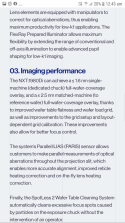You are using an out of date browser. It may not display this or other websites correctly.
You should upgrade or use an alternative browser.
You should upgrade or use an alternative browser.
Chinese semiconductor industry
- Thread starter Hendrik_2000
- Start date
- Status
- Not open for further replies.
It is alleged that SMEE 28nm lithography machine failed to pass the 02 project acceptance exam
11月18日消息,B站大V马督工睡前消息第353期爆料称,从各方面得到的信息来看,上海微电子研发的28nm光刻机由于没有通过02专项的国家验收,因此上海微电子的28nm光刻机将无法在2021年内完成供货。
不过,对于这个消息,上海微电子并未做出正面回应,因此也无法证实这则消息的真伪,还需理性地看待这一消息。
It is alleged that SMEE 28nm lithography machine failed to pass the 02 project acceptance exam
Yeah Overseer Ma said that. Kind of expected, really. Semiconductor is hard. I think a lot of people here are overly optimistic. Of course, with money and time things will eventually get sorted out.
It is a very hard and precise industry. And thats just 28nm. I magine more advanced stuff. It will take china a lot of time and effort to advance in this field. And will it ever approach ASML? I have my doubts.Kind of expected, really. Semiconductor is hard. I think a lot of people here are overly optimistic.
It is a very hard and precise industry. And thats just 28nm. I magine more advanced stuff. It will take china a lot of time and effort to advance in this field. And will it ever approach ASML? I have my doubts.
One or even two generations behind is good enough. Once China catches up sufficiently the risks of blacklisting will be significantly reduced, as the benefits of more advanced processes are really fairly marginal. Power consumption are low enough that the biggest factor for a phone's battery life is probably the brightness level or refresh rate of its display.
China, once it's only one or two generations behind, can also deter blacklisting by threatening to ban sales of products made with most advanced processes to domestic Chinese consumers, which will make investments into developing cutting edge process much harder to justify economically.
failed to pass the 02 project acceptance exam?
So according to this news the first generation of SMEE immersion Lithography machine is just two "generations" behind ASML in term of performance, that is impressive if true. I personally thought that China first generation of immersion lithography machines will be "good enough" for the 28nm-14nm nodes. This could mean that this machine is good enough for the 14nm to 7nm nodes using multi-patterning techniques. So the next generation could be good enough for the 5nm nodes using multi-patterns techniques until they develop their EUV machine.In the second phase of the 02 special lithography machine project, the set time is: acceptance of 193nmArF immersion in 2021 DUV lithography machine, the benchmark product is ASML's strongest DUV lithography machine at this stage: TWINSCAN NXT: 2000i
@tokenanalyst bro SSA800 DUVL had a MMO of 2.5nm as per info provided by @Oldschool, both ASML NXT 2000i and NXT 2050i had the same MMO of 2.5nm so if we sum it up you're correct the current SMEE 28NM DUVL had the same performance parameter with NXT 1980i which had the capability to produce 7nm chip using multi patterning. BUT as stated by @WTAN it can improve upon cause its basic foundation is solid.failed to pass the 02 project acceptance exam?
So according to this news the first generation of SMEE immersion Lithography machine is just two "generations" behind ASML in term of performance, that is impressive if true. I personally thought that China first generation of immersion lithography machines will be "good enough" for the 28nm-14nm nodes. This could mean that this machine is good enough for the 14nm to 7nm nodes using multi-patterning techniques. So the next generation could be good enough for the 5nm nodes using multi-patterns techniques until they develop their EUV machine.
by @Oldschool
SMIC Chengdu foundry, using Shanghai microlithography machine SSA800/10W immersion lithography machine parameters: lens NA: 1.35 single exposure resolution: 38-41nm dual workpiece stage: DWSi, the production rate is 200 wafers per hour Circle engraving accuracy: better than 2.5nm Design index: can meet the 28nm planar planner transistor logic circuit process requirements under a single exposure condition
By @WTAN
The stated MMO of SMEE DUVL is 2.5nm
The MMO of ASML 1980i is 2.5nm
The MMO/CMO of 2000i is 2.5nm
The MMO/CMO of 2050i is 2.5nm
The 2000i and 2050i have a ORION Alignment Sensor so the MMO is probably better than 2.5nm.
I would say that the SMEE 28nm DUVL is broadly equivalent to the 1980i.
Based on the SMEE MMO of 2.5nm which is similar to that of the 1980i, it should be able to do the 14nm process with Multi Patterning.
The 1980i is used by SMIC in China to produce 14nm ICs and the N+1(8nm) and N+2(7nm).
TSMC may have used the 1980i to produce their DUVL 7nm ICs.
SMEE will no doubt seek to improve the Overlay Accuracy of their DUVL so that it can match the latest NIKON DUVL in order to enable the production of 5nm ICs.
They should be able to achieve this as their MMO is already quite advanced by ASML and NIKON standards.
Attachments
Alleged by whom and what's his credibility?It is alleged that SMEE 28nm lithography machine failed to pass the 02 project acceptance exam
Nothing is 100% guaranteed, but EET-China is quite solid in my opinion. But like I said, nothing is 100% guaranteed.Alleged by whom and what's his credibility?
- Status
- Not open for further replies.

